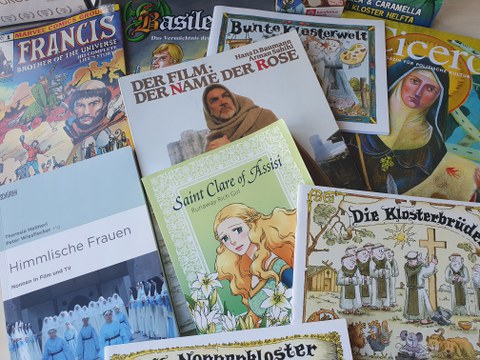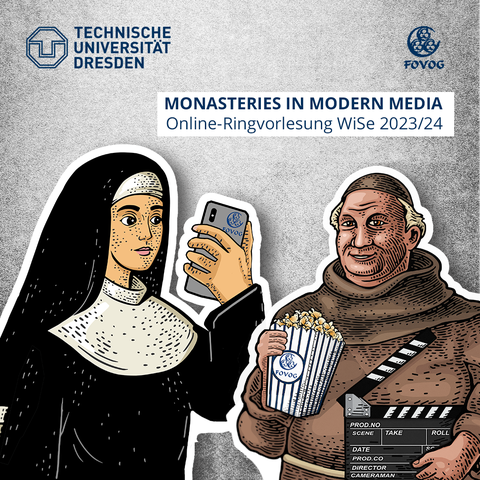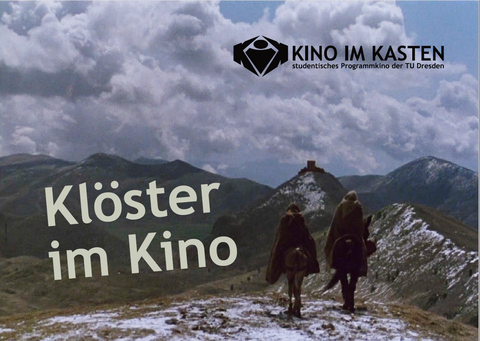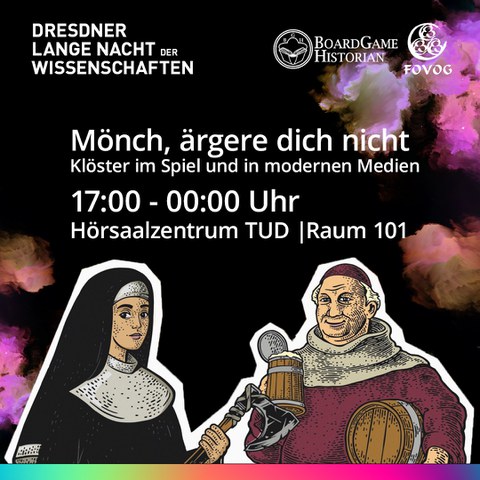Monasteries in Modern Media
Table of contents
The portrayal of nuns, monks and monasteries in modern media is an important component of modern (church) history cultures: In addition to actual historical sources and artefacts as well as reminiscences of the Hollywood film or historical novels, it is above all the values, norms and ideas of their time and environment of origin that influence the design of pop cultural media. In the project Monasteries in Modern Media, we are investigating the representation of monasteries in the narrower or broader sense. Whether films, digital or analogue games, literature, comics, etc. - we want to shed light on the presence of our research subject in modernity.
Lecture series "Monasteries in Modern Media 2: Manga, Film und Instagram – Klöster und Klerus in medialer Vielfalt" (Winter term 2023/24)
or most people in the 21st century, nuns, monks and monasteries are phenomena that they know not from their own experience, but primarily through media presentation.
After the first part of the lecture series "Monasteries in Modern Media" was held last semester under the title "Of beer-brewing monks and warlike nuns. Monasteries and Clergy in Analogue and Digital Games", the focus will now be expanded. In this way, the impressive media diversity in which monasteries and clergy are present in modern day will be addressed. In addition to Japanese manga and social media such as Instagram or Twitter, a special focus will be on the presence of monastic life in film. It will be shown that these various forms of representation of nuns, monks and monasteries are not only an important part of modern (church) historical cultures, but also convey values, norms and ideas of their respective contexts of origin.
The programme of the lecture series 2023/24 can be found here.
Film series Klöster im Kino
The Cinema is a place that opens up worlds - metaphorically, but always also in real terms. Films not only show images, they produce them and in this way shape our cultural memory. In films we see what otherwise remains hidden from us - at the price, of course, that they in turn cover up such images that we have formed from reading or our own observation.
Admittedly, for most people in the 21st century, monasteries are places they do not know from their own experience - at least those that not only present themselves as museums, but in which women or men still live according to a fixed and binding order, i.e. monastically. So it can be said: what we know about monasteries, we know very essentially through media mediation, whereby film has a special role to play. It is comparatively unimportant whether it is a historical film set in the Middle Ages or a current crime scene. What both have in common is the character of what is portrayed: Monasteries are always different.
The programme of past semesters can be found here.
@MonasticMedia on Instagram
Since October 2022, we have been collecting and examining representations of monks, nuns and monasteries on Instagram under @MonasticMedia.
Whether monks on beer bottles, nuns in horror films or monastic backdrops in board games - these and many comparable representations in their arrangements and stagings allow us to draw conclusions about the images and ideas that prevail in society about our research subject.
We want to share our findings and observations via our accounts and enter into conversation with all those who, like us, are interested in such ideas and images. At the same time, we would like to understand what social expectations are placed on our subject.
Courses
In order to familiarise our students with the project "Monasteries in Modenr Media", we regularly offer courses in which the subject area is dealt with. You can find an overview of the current and previous courses here.
Dresden Science Night 2023
On 30 June 2023, the 20th Dresden Science Night took place with the theme "Schlaugemacht bis Mitternacht!" – and the Research Centre for Comparative History of Religious Orders (FOVOG) participated with the event „Mönch, ärgere dich nicht. Klöster im Spiel und in modernen Medien“. The event took place in cooperation with the Chair of Modern and Contemporary History and Didactics of History. A report on the event can be read here.




